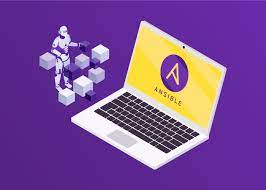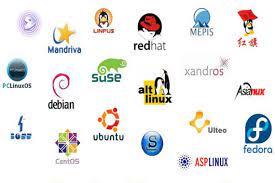Unleashing the Potential of Debian Distro: A Reliable and Versatile Operating System
The Power of Debian Distro: A Robust and Reliable Operating System
Debian is a Linux distribution that has gained a reputation for its stability, reliability, and commitment to free and open-source software. Founded in 1993 by Ian Murdock, Debian has since evolved into a versatile operating system that caters to a wide range of users, from beginners to advanced system administrators.
One of the key strengths of Debian is its package management system. Using the Advanced Package Tool (APT), users can easily install, update, and remove software packages with just a few simple commands. This streamlined process ensures that users have access to a vast repository of software that is constantly updated and maintained by the Debian community.
Debian is known for its strict adherence to the Debian Free Software Guidelines (DFSG), which ensures that all software included in the distribution is free from proprietary restrictions. This commitment to freedom has made Debian a popular choice among users who value open-source principles.
Another notable feature of Debian is its release cycle. The distribution follows a “release when ready” approach, which means that new versions are only released after thorough testing to ensure stability and compatibility. This approach has earned Debian a reputation for being one of the most reliable and secure Linux distributions available.
Debian also prides itself on its diverse range of supported architectures, making it suitable for use on everything from personal computers to servers, embedded systems, and more. This versatility has contributed to Debian’s widespread adoption across various industries and use cases.
Whether you are looking for a stable desktop environment, a secure server platform, or a flexible development environment, Debian offers a robust solution that can meet your needs. With its strong community support, extensive documentation, and commitment to open-source values, Debian continues to be at the forefront of the Linux ecosystem.
Experience the power of Debian Distro today and discover why it remains a top choice for users seeking reliability, security, and freedom in their operating system.
Why Debian Stands Out: Stability, Security, and Community Support
- Stable and reliable operating system
- Extensive repository of free and open-source software
- Strong commitment to security and privacy
- Versatile support for multiple architectures
- Transparent development process with regular updates
- Active community providing support and resources
Challenges of Using Debian: Navigating Complexity, Outdated Software, Limited Driver Support, and Delayed Updates
- Steep learning curve for beginners due to its focus on stability and complexity.
- Software packages may not always be the latest versions compared to other distributions.
- Limited official support for proprietary drivers and firmware, which can be challenging for some hardware configurations.
- The release cycle, while ensuring stability, may result in delays in receiving the latest features and updates.
Stable and reliable operating system
Debian Distro is renowned for its exceptional stability and reliability, making it a preferred choice for users seeking a robust operating system. With a meticulous testing process before each release, Debian ensures that users can rely on a consistent and secure computing environment. This commitment to stability means that Debian users experience fewer system crashes, software errors, and performance issues, providing a smooth and uninterrupted user experience for both personal and professional use cases.
Extensive repository of free and open-source software
Debian Distro stands out for its extensive repository of free and open-source software, providing users with a vast selection of applications, tools, and utilities to cater to diverse needs. With its commitment to the principles of open-source, Debian ensures that users have access to a wide range of high-quality software that is free from proprietary restrictions. This rich repository not only empowers users to customise their systems according to their preferences but also fosters a collaborative community spirit where developers can contribute and enhance the software ecosystem for the benefit of all users.
Strong commitment to security and privacy
Debian Distro stands out for its strong commitment to security and privacy, making it a trusted choice for users seeking a secure computing environment. With regular security updates, thorough testing processes, and a vigilant community dedicated to addressing vulnerabilities promptly, Debian prioritises the protection of user data and system integrity. By upholding stringent privacy standards and offering robust security features, Debian ensures that users can work and communicate online with confidence, knowing that their information is safeguarded against potential threats.
Versatile support for multiple architectures
One of the standout advantages of Debian Distro is its exceptional support for multiple architectures. Whether you are using a personal computer, a server, an embedded system, or even a niche hardware platform, Debian offers a versatile solution that can cater to a wide range of devices and computing environments. This flexibility not only showcases Debian’s commitment to inclusivity but also demonstrates its ability to adapt and thrive in diverse technological landscapes. Users can confidently rely on Debian to deliver consistent performance and compatibility across various architectures, making it a reliable choice for those seeking a truly adaptable operating system.
Transparent development process with regular updates
One of the standout advantages of Debian Distro is its transparent development process, coupled with regular updates. The Debian community follows an open and collaborative approach to software development, allowing users to track the progress of new features, bug fixes, and security updates. With a commitment to releasing updates only when thoroughly tested for stability and compatibility, Debian ensures that users receive reliable and timely improvements to their operating system. This transparent development process not only fosters trust within the community but also empowers users to actively participate in shaping the future of Debian Distro.
Active community providing support and resources
The Debian distribution stands out for its active and dedicated community, which plays a crucial role in providing support and valuable resources to users. Whether you are a beginner seeking guidance or an experienced user looking to delve deeper into the system, the Debian community offers forums, mailing lists, and online resources where users can seek help, share knowledge, and collaborate on various projects. This vibrant community ensures that users have access to a wealth of information, troubleshooting tips, and updates, making Debian a reliable and well-supported operating system for users of all levels.
Steep learning curve for beginners due to its focus on stability and complexity.
For beginners, one notable drawback of Debian Distro is its steep learning curve, primarily attributed to its emphasis on stability and complexity. The robust nature of Debian, while ensuring a reliable operating system, can be challenging for newcomers to navigate. The intricate package management system and the meticulous release cycle may require a deeper understanding of Linux fundamentals, making it less user-friendly for those who are new to the world of operating systems. As a result, beginners may find themselves facing a steeper learning curve when trying to grasp the intricacies of Debian Distro compared to more user-friendly distributions.
Software packages may not always be the latest versions compared to other distributions.
One drawback of Debian Distro is that software packages may not always be the latest versions when compared to other distributions. Due to Debian’s stringent testing and stability-focused release cycle, newer software versions may undergo thorough evaluation before being included in the official repositories. While this approach ensures reliability and compatibility, it can result in users having access to slightly older versions of software compared to distributions that prioritize offering the latest updates. Users seeking cutting-edge features or enhancements may find themselves waiting longer for software upgrades within the Debian ecosystem.
Limited official support for proprietary drivers and firmware, which can be challenging for some hardware configurations.
One notable drawback of Debian Distro is its limited official support for proprietary drivers and firmware, posing a challenge for users with certain hardware configurations. This limitation can result in difficulties when trying to set up devices that require proprietary components to function optimally. Users may find themselves needing to manually install third-party drivers or firmware, which can be a complex and time-consuming process, especially for those less experienced with Linux systems. As a result, some users may encounter compatibility issues or reduced performance on their hardware due to the lack of out-of-the-box support for proprietary components in Debian.
The release cycle, while ensuring stability, may result in delays in receiving the latest features and updates.
One drawback of Debian’s release cycle, focused on ensuring stability, is that it can lead to delays in receiving the latest features and updates. While this approach prioritises reliability and security, users may find themselves waiting longer for cutting-edge advancements and improvements available in other distributions. This trade-off between stability and access to the most up-to-date software may not align with the needs of users who value having the latest features and enhancements promptly.





